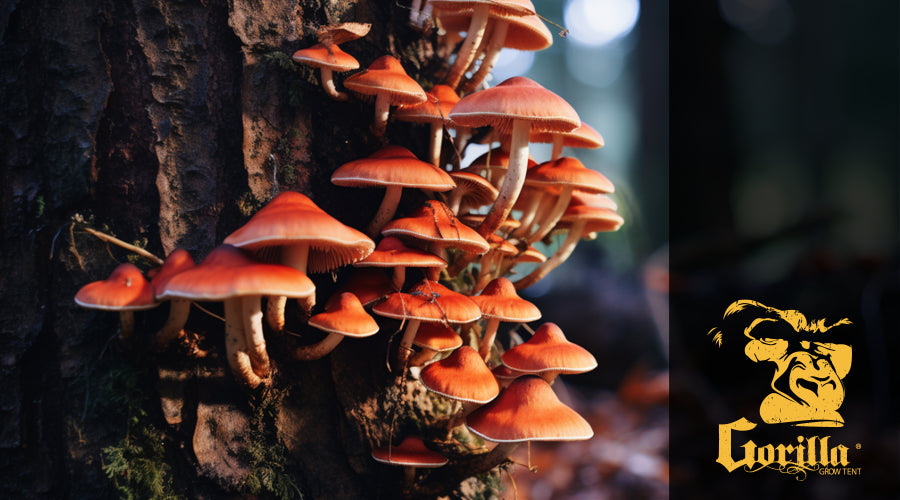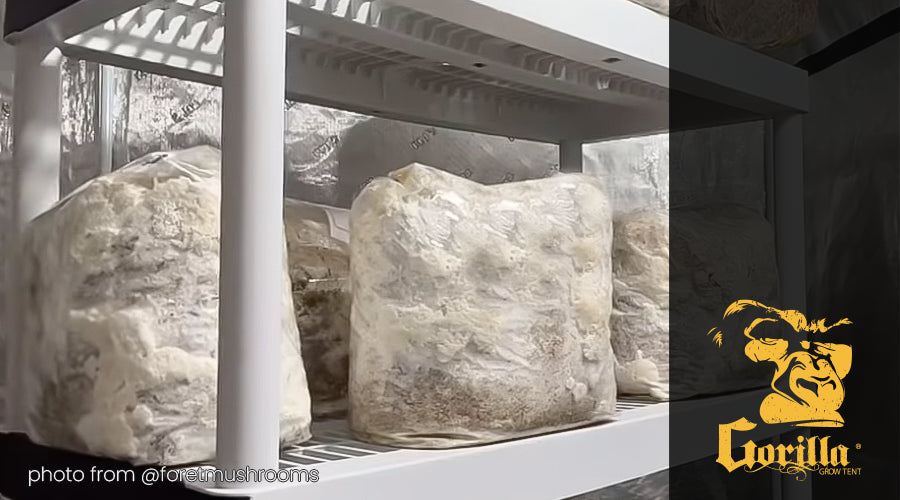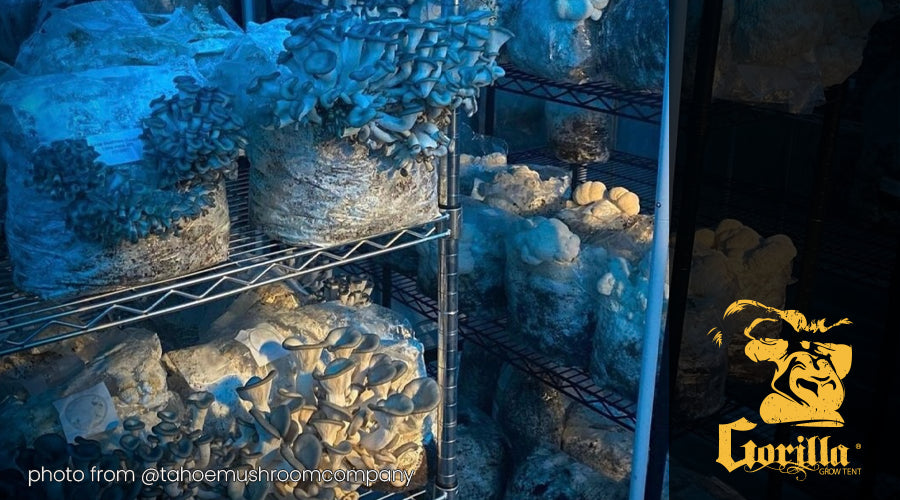
Growing Gourmet and Medicinal Mushrooms
A Journey into Cultivating Gourmet and Medicinal Mushrooms
Mushrooms, with their earthy flavors and impressive health benefits, have long held a special place in culinary and medicinal traditions worldwide. As interest in sustainable and holistic living continues to rise, so does the fascination with growing gourmet and medicinal mushrooms at home.
In this article, we'll delve into the captivating world of mushroom cultivation, exploring the basics, benefits, and steps to grow these fascinating fungi successfully.
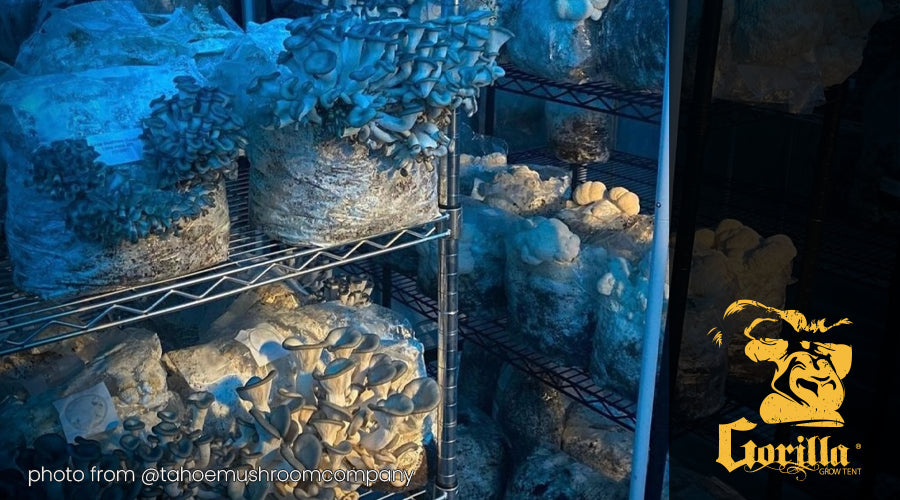
The Marvelous World of Mushrooms
Mushrooms are more than just ingredients in a dish – they are intricate organisms that play a vital role in our ecosystem. While some varieties provide unparalleled flavors and textures to our culinary creations, others possess potent medicinal properties that have been treasured for centuries. From the rich umami of Shiitake to the immune-boosting potential of Reishi, mushrooms offer a plethora of tastes and benefits.
Why Grow Your Own?
Freshness and Quality: When you cultivate mushrooms at home, you have complete control over their growth environment, ensuring optimum freshness and quality.
Sustainability: Cultivating your own mushrooms reduces your carbon footprint and helps conserve wild mushroom populations.
Medicinal Properties: Medicinal mushrooms like Lion's Mane and Chaga have been linked to various health benefits, including cognitive enhancement and immune system support.
Educational and Therapeutic: Mushroom cultivation can be a rewarding hobby that offers both mental relaxation and learning opportunities.
Getting Started: Mushroom Selection
Before embarking on your mushroom cultivation journey, selecting the right species based on your goals is crucial. Some popular options include:
Shiitake (Lentinula edodes): Known for their rich, meaty flavor, Shiitake mushrooms are a staple in many Asian cuisines. They are also believed to have immune-boosting and cholesterol-reducing properties.
Oyster (Pleurotus spp.): Oyster mushrooms come in various colors and possess a delicate, mild taste. They're easy to grow and can be an excellent choice for beginners.
Lion's Mane (Hericium erinaceus): With its unique appearance and potential cognitive benefits, Lion's Mane is gaining popularity. It has a slightly sweet, seafood-like flavor.
Reishi (Ganoderma lucidum): Revered in traditional Chinese medicine, Reishi mushrooms are known for their potential to enhance immune function and promote relaxation.
Creating the Ideal Growing Environment
Mushrooms thrive in specific conditions that mimic their natural habitat. Key factors include:
Substrate: The growing medium on which mushrooms thrive. It could be a mix of hardwood sawdust, straw, or even coffee grounds, depending on the species.
Temperature and Humidity: Different mushrooms have varying requirements, but generally, a humid environment with temperatures between 65-75°F (18-24°C) is ideal.
Light: While some light is needed for growth, most mushrooms prefer indirect light or darkness.
Ventilation: Proper airflow prevents the growth of contaminants and encourages healthy mushroom development.
The Cultivation Process
Preparation: Sterilize the growing substrate to eliminate any competing organisms. Then, could you introduce mushroom spores or mycelium into the substrate?
Colonization: Allow the mycelium to spread and colonize the substrate. This phase can take several weeks and requires careful temperature and humidity monitoring.
Fruiting: Once colonization is complete, induce fruiting conditions by adjusting humidity, temperature, and light. Soon, tiny pins will emerge and develop into full-grown mushrooms.
Harvesting: Harvest mushrooms when they reach their peak size and just before their caps flatten out.
Choosing the Right Growing Method
Mushrooms can be grown using various methods, each with its advantages and challenges. Some common methods include:
Spore Syringes and Agar Cultures: Starting with spore syringes or agar cultures allows you to isolate and propagate specific strains of mushrooms. This method is preferred by experienced cultivators who want to control the genetic characteristics of their mushrooms.
Spawn and Substrate: Using pre-inoculated spawn (mycelium) to introduce into a substrate is a beginner-friendly approach. It reduces the risk of contamination and speeds up the colonization process.
Logs and Stumps: Certain mushroom species, like Shiitake and Lion's Mane, can be cultivated on logs or stumps. This method requires patience as it takes longer for the mycelium to colonize the wood, but it can yield multiple fruiting cycles over the years.
Advanced Techniques for Mushroom Cultivation
Hydroponic Cultivation: Some mushrooms, like Oyster mushrooms, can be grown hydroponically. This method involves growing mushrooms on a substrate-free medium while providing essential nutrients through a water-based system.
Monotub Cultivation: Monotubs are large, plastic containers that provide a controlled environment for mushroom growth. They are commonly used for bulk substrate cultivation and can yield significant harvests.
Outdoor Cultivation: If you have outdoor space, consider cultivating mushrooms directly in your garden. Select mushroom species that naturally grow in your region and create designated mushroom patches.
Cold Shocking: Some mushroom species, like Lion's Mane, benefit from a cold shock before fruiting. This involves exposing the mycelium to cooler temperatures for a brief period to stimulate the formation of fruiting bodies.
Diversifying Your Cultivation
Companion Planting: Some plants have a symbiotic relationship with mushrooms, promoting healthy growth and deterring pests. For instance, planting herbs like mint and thyme near your mushroom patch can help create a beneficial environment.
Microclimate Management: Different parts of your home or garden may have slightly varying microclimates. Experiment with different locations to find the optimal conditions for your chosen mushroom species.
Troubleshooting and Contamination Management
Contamination is a common challenge in mushroom cultivation. Mold and bacteria can invade your growing substrate and hinder mushroom growth. To prevent and manage contamination:
Sterilization: Ensure that all equipment, tools, and growing materials are properly sterilized before use. This minimizes the risk of introducing contaminants.
Isolation: If you notice contamination, remove the affected area immediately. Isolating contaminated portions can prevent the spread to healthy mycelium.
Hygiene Practices: Maintain excellent hygiene throughout the cultivation process. Wash your hands thoroughly, wear gloves, and work in a clean and sanitized environment.
Harvesting and Enjoying Your Harvest
Harvesting mushrooms at the right time is crucial for optimal flavor and texture. Here's how to do it:
Timing: Harvest mushrooms just before their caps fully flatten out and open. This ensures they are at their peak flavor and nutritional value.
Clean Cut: Use a clean, sharp knife or scissors to cut the stem at the base. Avoid twisting or pulling, as this can damage the mycelium and affect future yields.
Reflushing: Some mushroom species can produce multiple flushes (waves of mushrooms) from a single substrate. After harvesting, continue to maintain the growing conditions to encourage subsequent flushes.
Exploring Culinary and Medicinal Uses
Once you've harvested your mushrooms, the culinary and medicinal possibilities are endless:
Culinary Creations: Experiment with various recipes to showcase the unique flavors and textures of your homegrown mushrooms. From risottos and stir-fries to soups and pizzas, gourmet mushrooms add a gourmet touch to any dish.
Medicinal Benefits: Research the specific health benefits associated with your cultivated mushrooms. Incorporate them into teas, tinctures, or supplements to harness their potential therapeutic properties.
Continuous Learning and Growth
Mushroom cultivation is a journey of discovery and learning. As you gain experience, you may want to explore advanced techniques, experiment with different substrates, and even create your own unique mushroom strains.
Growing gourmet and medicinal mushrooms is a fulfilling and enriching endeavor that connects us to the natural world in a profound way. As you embark on this journey, remember that patience, attention to detail, and a willingness to learn are key to achieving successful yields. From the thrill of watching tiny pins develop into full-grown mushrooms to savoring the flavors and benefits they offer, mushroom cultivation is a rewarding experience that allows us to cultivate not only fungi but also a deeper connection to nature and our own well-being.
So, whether you're nurturing a cluster of Shiitake or cultivating the regal Reishi, each step you take brings you closer to the captivating world of mushrooms and all the wonders it holds. Happy cultivating!
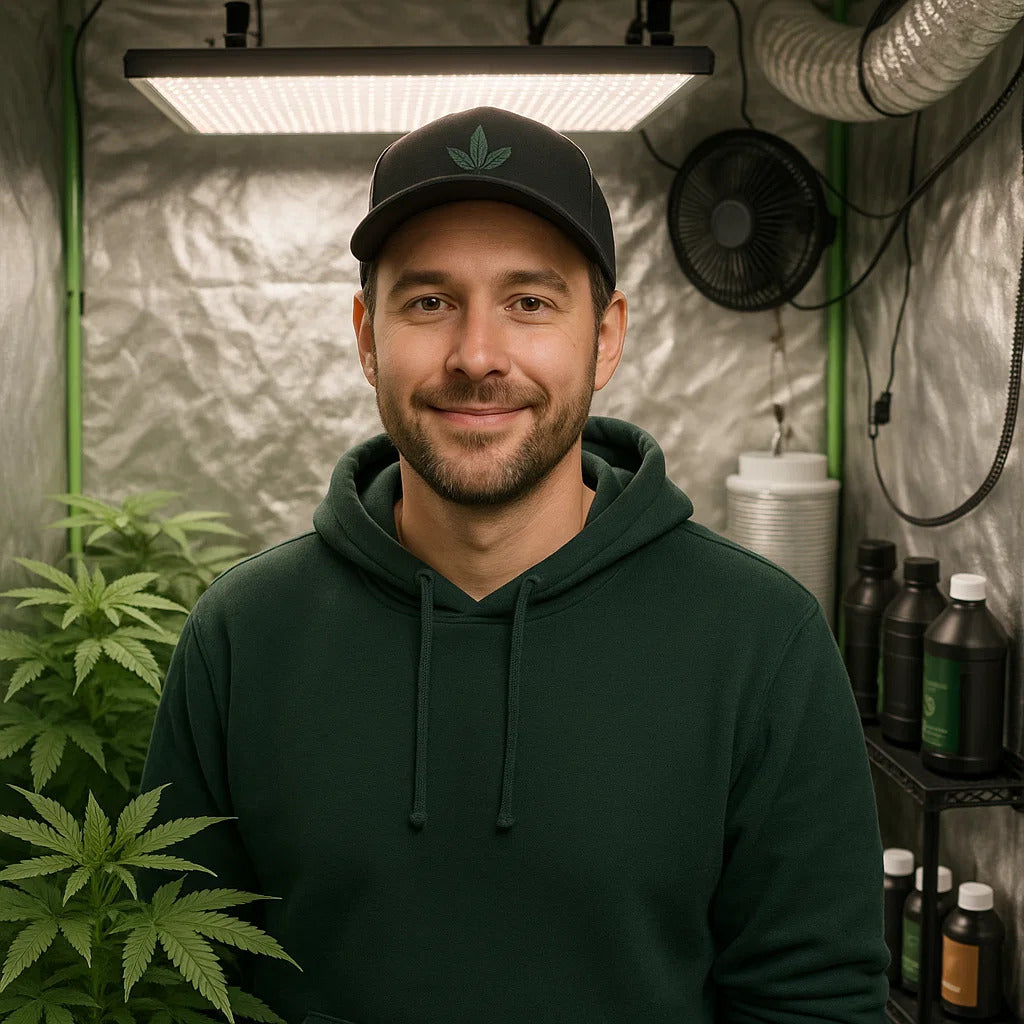
Lena Myles
I'm a mushroom enthusiast and home cook based in Oregon. I'm passionate about foraging and creating fungi-focused recipes, especially delicious, plant-based dishes using gourmet mushrooms like trumpet, shiitake, and oyster. When I’m not in the kitchen, you’ll usually find me wandering the woods in search of new wild flavors.

